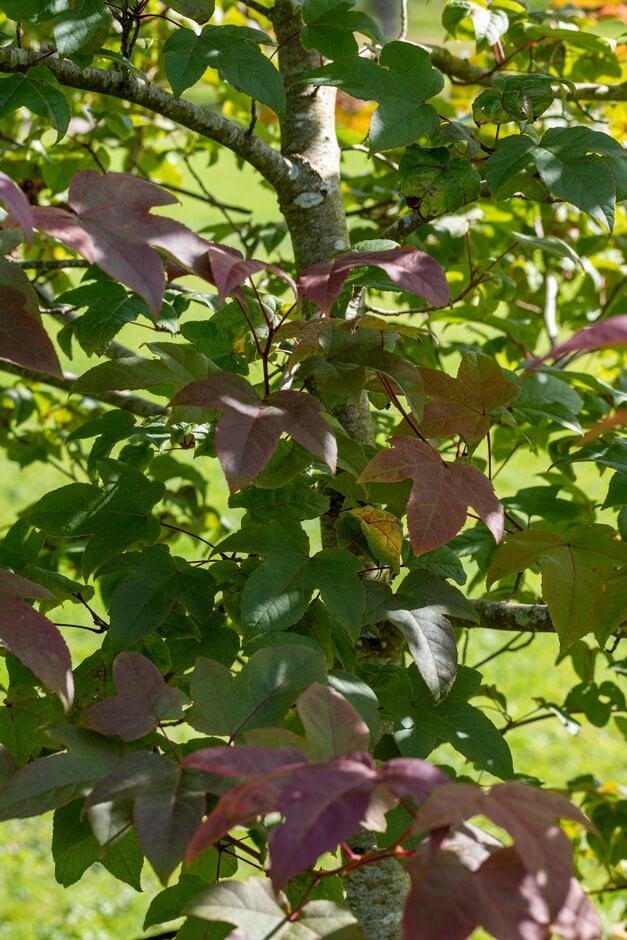Liquidambar acalycina
A broadly conical, medium-sized tree to about 15m. Leaves are bright green, with three to five pointed lobes; young foliage is flushed red for much of the growing season but there is little autumn colour. Inconspicuous clusters of small, yellow-green flowers are followed by long-lasting, hanging, spiky, dark brown fruit
Size
Ultimate height
4–8 metresTime to ultimate height
10–20 yearsUltimate spread
4–8 metresGrowing conditions
Moisture
Moist but well–drainedpH
Acid, NeutralColour & scent
| Stem | Flower | Foliage | Fruit | |
| Spring | Green Red | Brown | ||
|---|---|---|---|---|
| Summer | Green | Green Red | Brown | |
| Autumn | Green Red | Brown | ||
| Winter | Brown |
Position
- Full sun
- Partial shade
Aspect
East–facing or South–facing or West–facing
Exposure
Exposed or Sheltered Hardiness
H5Botanical details
- Family
- Hamamelidaceae
- Native to GB / Ireland
- No
- Foliage
- Deciduous
- Habit
- Bushy
- Genus
Liquidambar are deciduous trees grown for their alternate, maple-like leaves which take on brilliant and long-lasting autumn colour; flowers and fruits are inconspicuous
- Name status
Correct
- Plant range
- China
How to grow
Cultivation
Grow in moist but well-drained neutral to acid, moderately fertile soil, in full sun or partial shade. Suitable for woodlands or as a specimen tree. Full sun brings out the best autumn colour - see tree cultivation
Propagation
Propagate by seed or semi-hardwood cuttings
Suggested planting locations and garden types
- Architectural
- Cottage and informal garden
- Low Maintenance
Pruning
Pests
Generally pest-free
Diseases
May be susceptible to honey fungus
Get involved
The Royal Horticultural Society is the UK’s leading gardening charity. We aim to enrich everyone’s life through plants, and make the UK a greener and more beautiful place.
